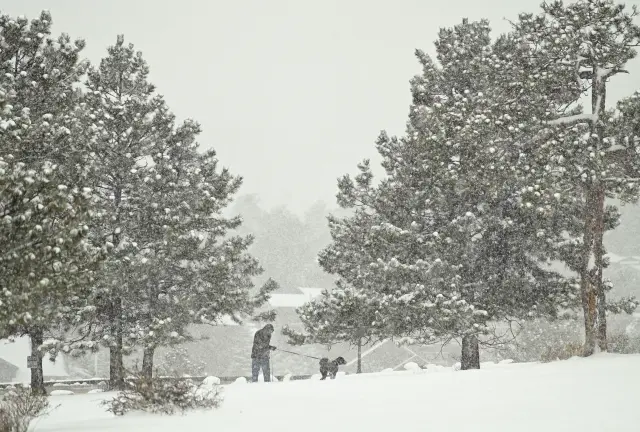-
Blue Jays Fans Take Note of Kyle Tucker’s Wife’s Old Social Media Activity - 11 mins ago
-
Homeland Security Missions Falter Amid Focus on Deportations - 33 mins ago
-
Austin Reaves Has Message for LeBron James After Bronny James’ Lakers Start - 46 mins ago
-
Epstein Emails Reveal a Lost New York - about 1 hour ago
-
How to Watch Commanders vs Dolphins: Live Stream NFL Madrid Game, TV Channel - about 1 hour ago
-
How to Watch Portugal vs Armenia: Live Stream FIFA World Cup 2026 Qualifying, TV Channel - 2 hours ago
-
Meet Dr. ChatGPT - 2 hours ago
-
Is Newsom Democrats’ 2028 frontrunner or a flash in the pan? - 2 hours ago
-
Child Psychologist Reveals 7 Signs Your Child Is Gifted - 3 hours ago
-
What to Know About Chile’s Election on Sunday - 3 hours ago
Winter Weather Warnings As 18 Inches of Snow To Hit
Residents across two U.S. states have been issued a winter weather warning by the National Weather Service (NWS) to prepare for up to 18 inches of snow from Sunday morning into Monday night.
Why It Matters
The NWS has warned drivers that travel could be difficult as roads—especially over bridges and overpasses—are likely to become “slick and hazardous.” In some areas, strong winds coupled with moderate to heavy snowfall could reduce visibility to below 1 mile, which could affect the Monday morning and evening commutes. Residents in affected areas have also been told to expect possible power outages as the weight of the snow could damage power lines.

What To Know
The two states that have been issued winter weather warnings by the NWS are New York and Vermont.
New York
Drivers in northern Herkimer County should prepare for up to 14 inches of accumulated snow, especially north of Route 28. Snowfall rates are expected to be just below 1 inch per hour and visibility reduced to under a mile, in some places.
Southeastern St. Lawrence County could get between 6 and 12 inches of accumulated snow through Sunday and into Monday evening, and southern Franklin and western Clinton Counties could get up to 15 inches, with gusty winds as high as 35 mph, potentially causing “sporadic power outages” and “difficult to impossible” travel conditions.
Vermont
Washington, Orleans, eastern Chittenden, eastern Franklin, and Lamoille Counties should brace themselves to get between 10 and 18 inches of snow on the northwestern slopes. Lower-ground areas should expect around 1 inch with ice making road conditions hazardous, especially during Monday’s commutes.
The NWS advises those in affected areas that, if they must travel, they should tell someone their plans before they set off, and carry an emergency winter survival kit in the car, which includes items like a battery powered radio, booster cables, shovels, sand, a spare flashlight, a first aid kit, non-perishable, high-calorie food, water, and extra, warm clothing or blankets.
What People Are Saying
The NWS advises those in affected areas to: “Stock up on food, medication, and first aid supplies. Keep flashlights and a portable radio handy, along with extra batteries. Be prepared for the possibility of power outages, and stay informed on the latest weather developments by listening to NOAA [National Oceanic and Atmospheric Administration] weather radio or commercial news media.”
What Happens Next
Snowfall amounts are likely to vary, with more expected across higher elevation areas. The NWS is urging residents and travelers to “watch for rapidly changing road conditions,” especially if they’re planning to travel across mountainous terrain, and to be careful when going outside, as surfaces could be icy and slippery, increasing the risk of falling.
Source link




















